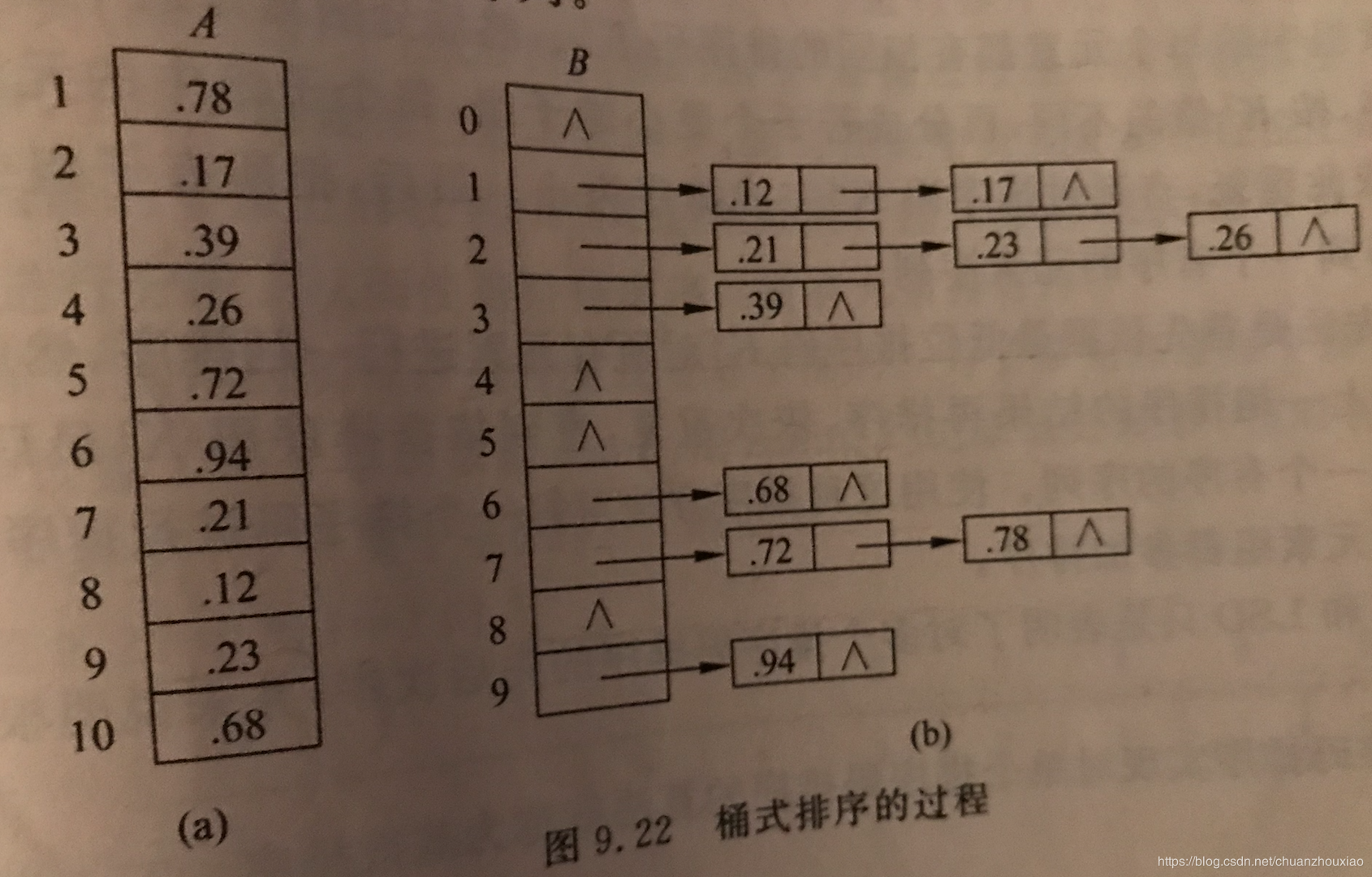您好,登录后才能下订单哦!
密码登录
登录注册
点击 登录注册 即表示同意《亿速云用户服务条款》
一、思路
是将[0,1]区间划分为n个等长的子区间。然后,将各个元素按照自己所属的区间放入相应的桶中,只需要将每个桶的元素排好序,依次输出各个桶内的元素,就得到了有序的元素序列。

二、实现程序:
#include <iostream>
using namespace std;
const int offset = 105; // 为桶的边界
const int maxSize = 100; // 数组的最大存储范围
// 桶排序
template <typename T>
void BucketSort(T arr[], int n);
// 输出数组
template <typename T>
void Print(T arr[], int n);
int main(int argc, const char * argv[]) {
int n, i, arr[maxSize];
cout << "请输入要排序的数的个数:";
cin >> n;
srand((int)time(NULL)); // 设置时间为随机点
for(i = 0; i < n; i++) // 产生n个随机数
arr[i] = rand() % 100;
cout << "排序前:";
Print(arr, n);
BucketSort(arr, n); // 调用桶排序
std::cout << "排序后:";
Print(arr, n);
return 0;
}
template <typename T>
void BucketSort(T arr[], int n) {
int i, j;
T buckets[offset];
for(i = 0; i < offset; i++) // 清零
buckets[i] = 0;
// 1.计数,将数组arr中的元素放到桶中
for(i = 0; i < n; i++)
buckets[arr[i]]++; // 将arr[i]的值对应buckets数组的下标,每有一个就加1
// 2.排序
for(i = 0, j = 0; i < offset; i++) {
while(buckets[i] > 0) { // 说明存有元素,相同的整数,要重复输出
arr[j] = i;
buckets[i]--;
j++;
}
}
}
// 输出数组
template <typename T>
void Print(T arr[], int n) {
int i;
for(i = 0; i < n; i++)
cout << arr[i] << " ";
cout << endl;
}
测试结果:

以上所述是小编给大家介绍的C++桶排序详解整合,希望对大家有所帮助,如果大家有任何疑问请给我留言,小编会及时回复大家的。在此也非常感谢大家对亿速云网站的支持!
免责声明:本站发布的内容(图片、视频和文字)以原创、转载和分享为主,文章观点不代表本网站立场,如果涉及侵权请联系站长邮箱:is@yisu.com进行举报,并提供相关证据,一经查实,将立刻删除涉嫌侵权内容。